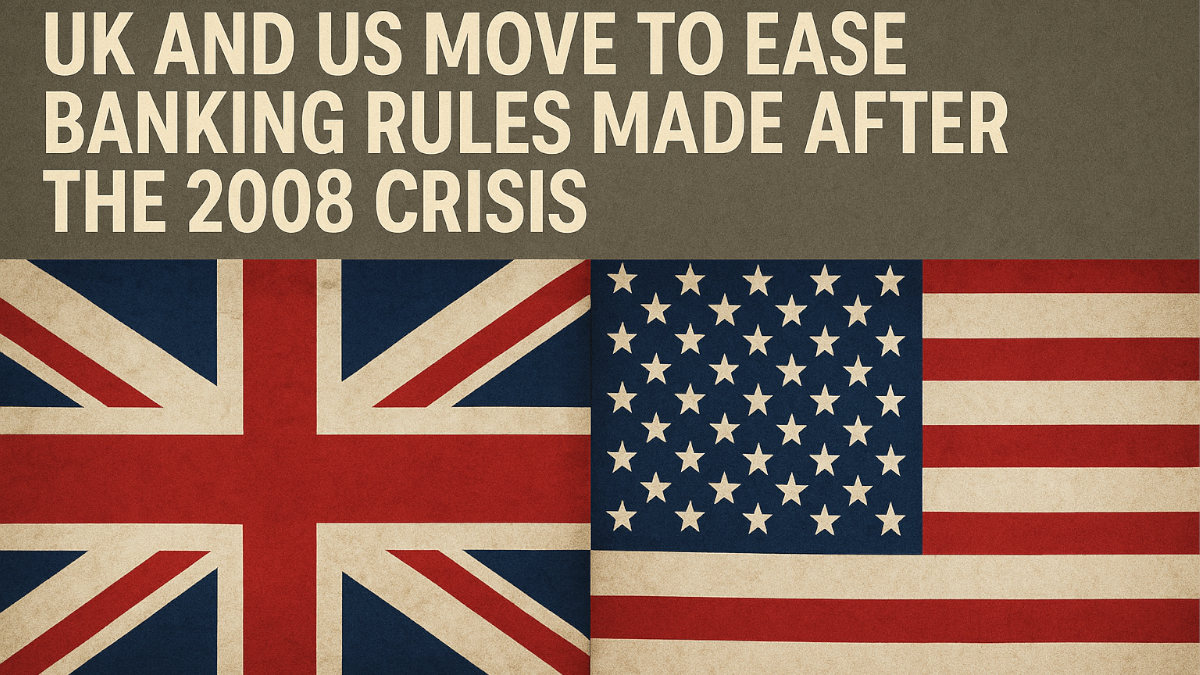- Analytics
- Trading News
- UK and US Move to Ease Banking Rules Made After the 2008 Crisis
UK and US Move to Ease Banking Rules Made After the 2008 Crisis

The UK and the US are stepping away from key banking rules that were put in place after the 2008 financial crisis. These rules were meant to prevent another global collapse by keeping banks from taking big risks with customer money.
Now, both countries are showing more interest in growth than in strict financial oversight. This shift is being welcomed by big banks on both sides of the Atlantic, including JPMorgan, Goldman Sachs, HSBC, NatWest, and Lloyds.
UK Treasury to Develop Softer Rules
UK Treasury chief Rachel Reeves plans to announce several concessions to the financial sector in a speech at Mansion House in London. Among the key proposals:
- Looser accountability for finance executives
- Simplified consumer complaint process
- Willingness to revisit the ringfence rule
The ringfence is a rule that requires large banks to keep their retail banking (savings and mortgages) separate from riskier investment banking. It was introduced after the crisis to stop taxpayer bailouts if banks failed again.
Banks Argue Ringfence is Outdated
British and international banks say the rule now holds them back. They argue it distorts lending and limits their ability to offer full services to customers. In February, the UK government already softened the rule. Now banks want to remove it completely.
Executives from HSBC, Lloyds, NatWest, and Santander’s UK branch recently sent a letter to the Treasury asking for more change. They said they could support the economy better without the ringfence.
NatWest's CEO Paul Thwaite supported this move, even though his bank was once bailed out with public money during the last crisis. His bank was recently returned to full private ownership after 17 years.
Who Benefits and Who is Concerned
According to RBC Capital Markets, removing the ringfence could bring UK banks around £1.5 billion more in profits each year. NatWest alone could gain £500 million.
But critics say this could increase risk. John Vickers, who originally recommended the ringfence, warns that banks would just use regular deposits to grow their investment banking arms; the very part of the business that caused so much damage in 2008.
Not Everyone Agrees with the Change
Barclays, the UK bank with the largest investment business, did not sign the letter pushing for change. Its CEO reminded the public that during the last crisis, the UK government had to spend £130 billion propping up failing banks.
The Bank of England, which oversees banking rules, has said it’s willing to review the regulation, but is not likely to support a full rollback. The bank still believes protecting household and small business deposits is essential.
Trend is Global
In the US, Wall Street has also had success pushing back on post-crisis rules. Regulators recently proposed easing borrowing limits and backed down from plans to raise capital requirements.
Still, some countries are tightening rules. Switzerland, after the collapse of Credit Suisse in 2023, is now making UBS follow stricter requirements. And in the US, midsize banks face more scrutiny after the fall of Silicon Valley Bank.
The Bottom Line
As memories of 2008 fade, politicians and bankers are turning their focus toward growth and away from regulation. But while banks see profit opportunities, others warn that the risks of relaxing the rules could come back to haunt the public.







